THE
GUNSMITHS
MANUAL
by J. P. Stelle
and
Wm. B. Harrison

Copyright ' 2013 by J. P. Stelle and William B. Harrison
All Rights Reserved. No part of this book may be reproduced in any manner without the express written consent of the publisher, except in the case of brief excerpts in critical reviews or articles. All inquiries should be addressed to Skyhorse Publishing, 307 West 36th Street, 11th Floor, New York, NY 10018.
Skyhorse Publishing books may be purchased in bulk at special discounts for sales promotion, corporate gifts, fund? raising, or educational purposes. Special editions can also be created to specifications. For details, contact the Special Sales Department, Skyhorse Publishing, 307 West 36th Street, 11th Floor, New York, NY 10018 or info@skyhorsepublishing.com.
Skyhorsen and Skyhorse Publishingn are registered trademarks of Skyhorse Publishing, Inc.  , a Delaware corporation.
, a Delaware corporation.
Visit our website at www.skyhorsepublishing.com.
10 9 8 7 6 5 4 3 2 1
Library of Congress Cataloging in Publication Data is available on file.
ISBN: 978-1-62087-720-3
eISBN: 978-1-63220-246-8
Printed in the United States of America
EDITORS NOTE
J. P. STELLE AND
WM. B. HARRISONS
THE GUNSMITHS MANUAL
by Dr. Jim Casada
First published in 1883, The Gunsmiths Manual is generally reckoned to be the first substantive work dealing with gunsmithing exclusively and in detail. As staff for American Gunsmith note in The Gunsmiths Reference Library, published in 2009, this volume, while well over a century old, is more than a mere historical curiosity. The books first 18 pages present one of the most concise histories of the gun, from the discovery of gunpowder to the breechloader, weve ever read. They also recommend its coverage of mundane matters, such as removal of rusted screws, as a way of gaining full familiarity with muzzleloader nomenclature, and for insight when it comes to restoration work on black powder guns.
Thomas G. Samworth, the publishing genius who created and owned the Small-Arms Technical Publishing Company, was also enthusiastic about the books merits when he reprinted it in 1945. His promotional for the work gives an excellent assessment of its value at the time. Back in 1882, when any town and village of any size whatever had its own hardworked gunsmith, J. P. Stelle and William B. Harrison wrote The Gunsmiths Manual one of the very few early American works on firearms, and a book immediately recognized and accepted as the standard textbook of the gunsmithing profession. This publication held that position of eminence for several decades; in fact, it was the authority until the coming of smokeless powder.
Ray Riling, in his Guns and Shooting: A Bibliography, offers a useful summation of the books wide-ranging contents: Hints, recipes, and practical suggestions to the individual craftsman and gunsmith. Descriptions of guns and pistols, stocks, barrels, breeching tools, chambering of breech-loading barrels, gun-ribs, thimbles, rifling, locks, gun-hammers and their fitting, nipples, cones, springs, rods, bullet-moulds, etc. In other words, the works coverage is comprehensive. None of these sources provides appreciable biographical information on the authors, and my own researches have been similarly fruitless. Internal evidence in the book does suggest that one if not both men were working gunsmiths, and there is no doubt whatsoever that they knew their subject matter intimately. The book is rightly considered a landmark in the field of gunsmithing and should be reckoned the cornerstone of any library on the subject.
Some indication of its enduring appeal is offered by the fact that Samworths reprint of the Excelsior Publishing original (many listings of the Samworth reprint wrongly give Excelsior as the 1945 publisher) was but the first of a series. A decade later, Pioneer Press, a small specialty publisher in Harriman, Tennessee, produced another reprint. In 1972, the Gun Room Press of Highland Park, New Jersey, continued the trend. Then in 1993, there was yet another reprint, by the Border Press. All these reprints notwithstanding, the book is quite difficult to find. Indeed, the original edition and the Samworth reprint are highly collectible, the latter thanks in part to its lovely dust jacket. The dust jacket, Gayle Hoskins painting Trade from the Monongahela, depicts frontiersmen gathered outside a gunsmithing shop in the Lancaster, Pennsylvania, area. Samworth also offered the painting as a separate print. It is, like the book, in considerable demand in collectors circles.
For most members of the Firearms Classics Library, this books primary appeal will be its historic merits. Yet anyone who putters with or shoots muzzleloaders will also find it valuable from a factual standpoint, and savvy black powder gunsmiths still use it as a go-to reference work. Those considerations, not to mention the fact that the book, whether in original or reprinted form, is missing from most collections, make it a logical and welcome addition to the Firearms Classics Library.
Jim Casada
ROCK HILL, SOUTH CAROLINA

Trade from the Monongahela
THE
GUNSMITHS MANUAL;
A COMPLETE HANDBOOK
FOR THE
AMERICAN GUNSMITH,
BEING A
PRACTICAL GUIDE TO ALL BRANCHES OF THE TRADE.
B Y J. P. STELLE AND WM. B. HARRISON.

Skyhorse Publishing
Entered according to Act of Congress, in the year 1883,
B Y JESSE HANEY & CO.,
In the Office of the Librarian of Congress, at Washington.
PREFACE.
T HE G UNSMITHS M ANUAL is designed to furnish in convenient form such information as shall be of most use in the actual every-day work of the shop, and for such demands or emergencies as are liable to challenge the knowledge or skill of the workman. It is manifestly not the province of such a book to assume to guide a manufacturer in the conduct of a great factory. Were such a work at all feasible, it could not also properly meet the wants of the ordinary gunsmith, and the scope of his little shop. He is the man whose case has been kept steadily in mind in the preparation of the following pages, and whatever the book contains has been included because it was believed to be useful to him. No pains have been spared to make every detail full, explicit and reliable, and it is believed that any intelligent man will find but little trouble in understanding and successfully applying the instructions.
In the confident hope that this work will maintain and enhance the favorable reputation which M ESSRS J ESSE H ANEY & Co. have acquired by their Trade Manuals and Useful Handbooks, it is respectfully submitted to the verdict of the American Gunsmiths by
T HE A UTHORS .
INDEX.
THE GUNSMITHS MANUAL
CHAPTER I.
HISTORY OF THE GUN.
Discovery of Gunpowder.No authentic records have been left to show when or by whom was discovered the wonderful properties of the chemical compound now known as gunpowder; nor have we any information concerning the uses to which it was originally applied. There is little probability that it was at once employed as an agent in fire-arms; indeed, we have pretty strong evidence to show that it was not, for Roger Bacon refers to it in his famous treatise,

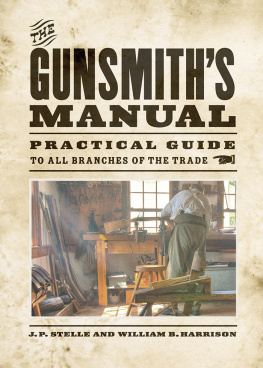


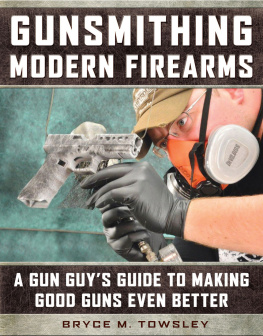
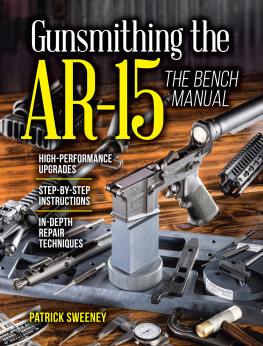
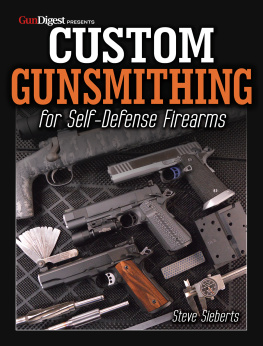
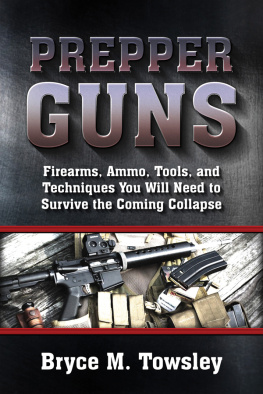
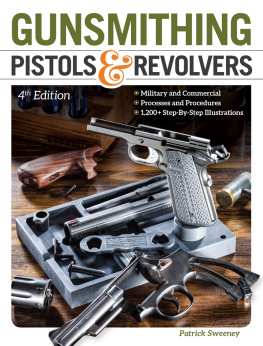
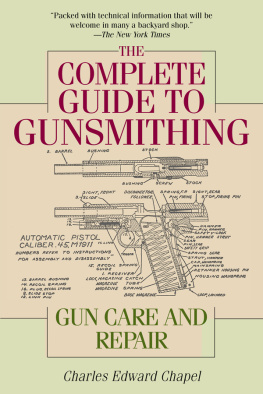
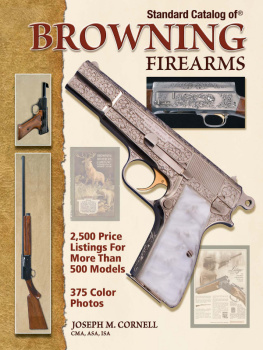
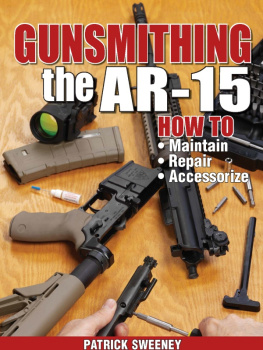

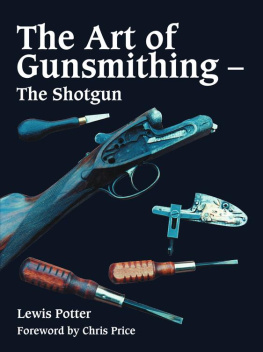

 , a Delaware corporation.
, a Delaware corporation.
